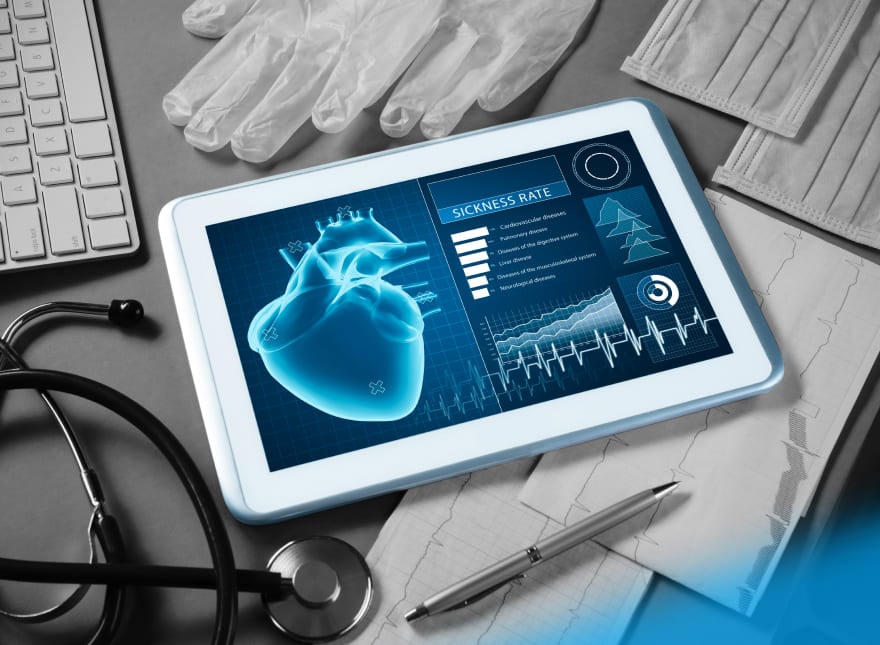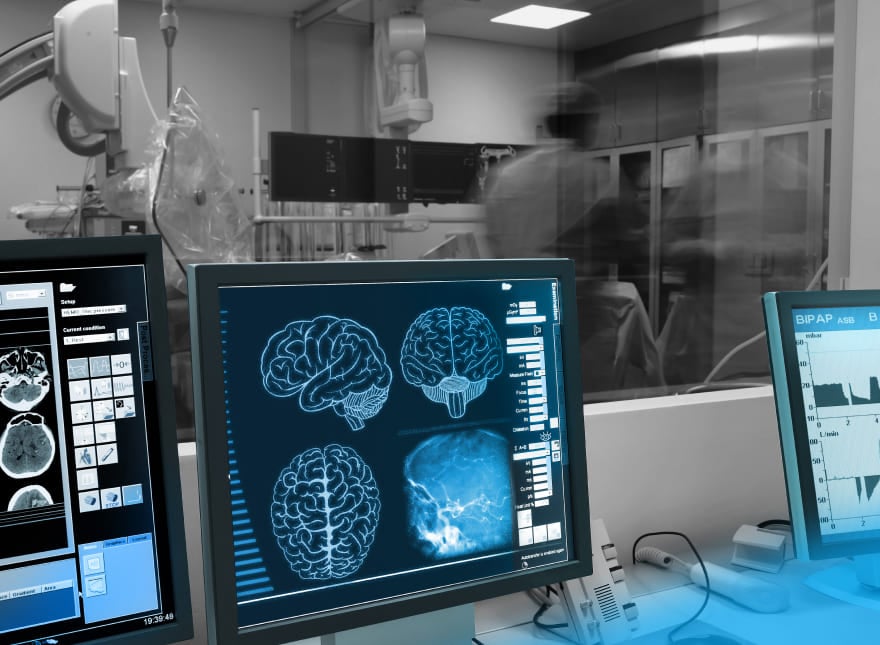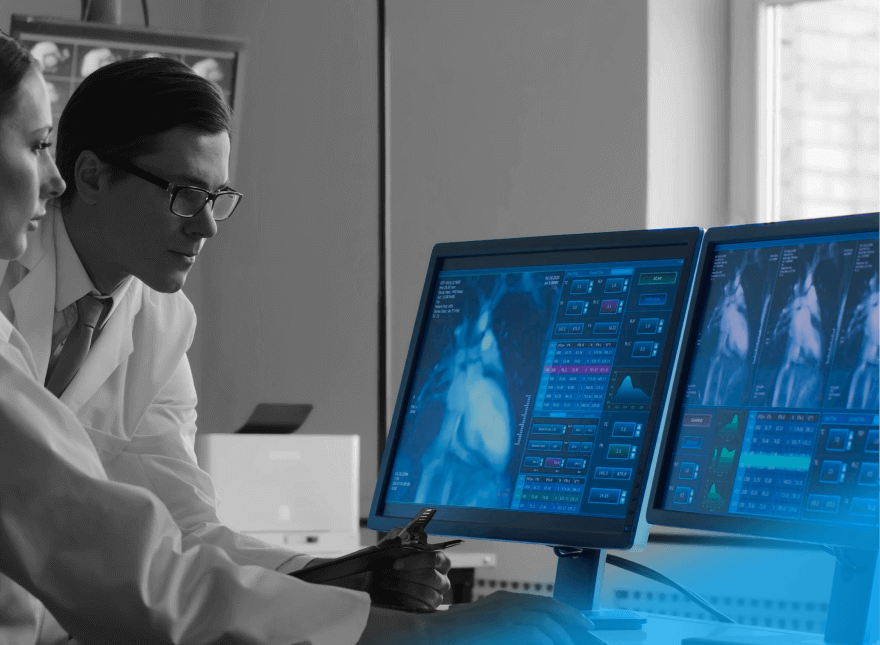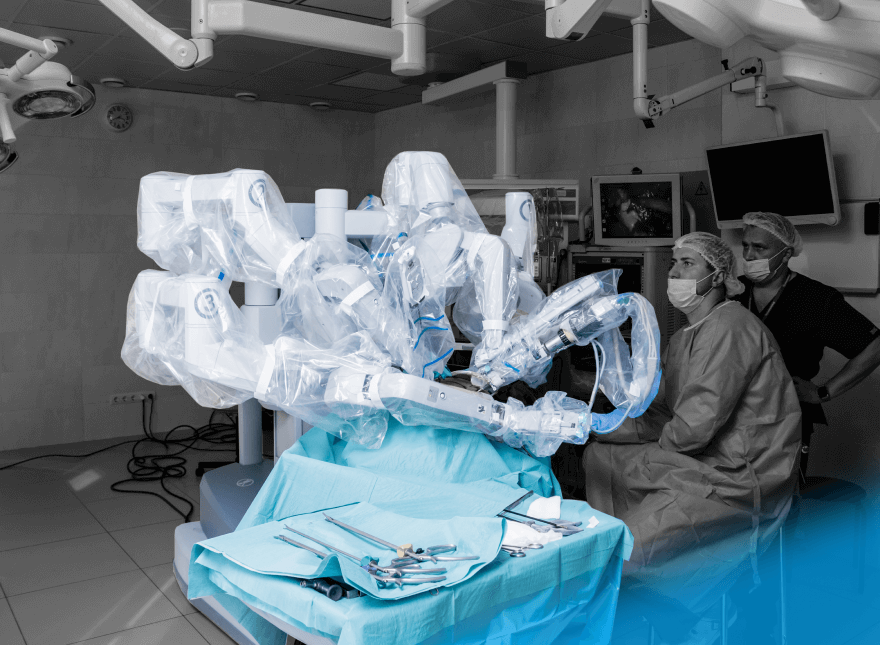Check out our latest blog article: From component to enterprise – modular robotics done right.
A Look at Big Data Use Cases in Healthcare, with Examples
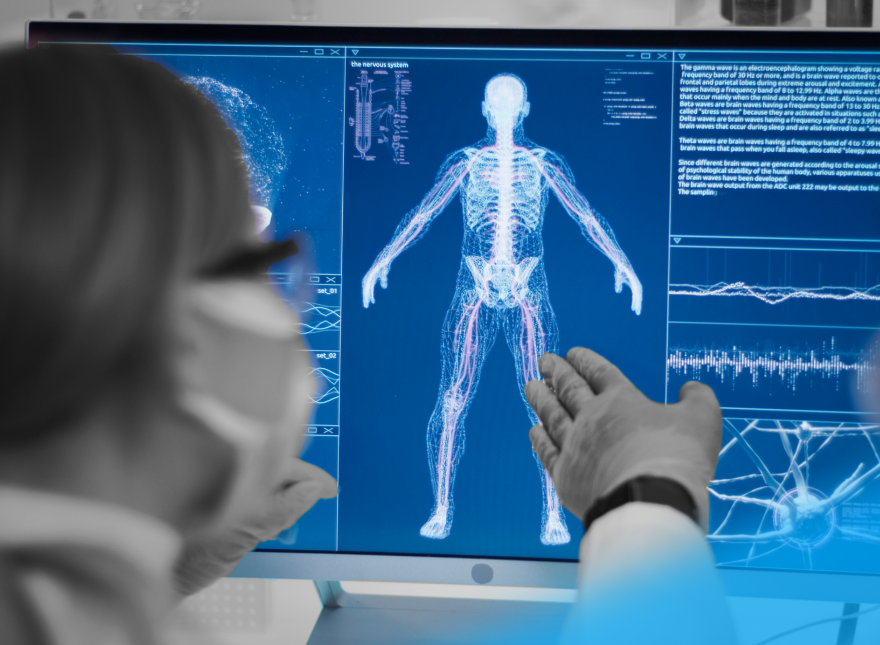
Data used to come from disparate sources, like pieces of a puzzle waiting to be assembled. Fast-forward to today and big data has emerged as the glue that connects these pieces. It’s not just a buzzword, especially in an industry as crucial as healthcare. The use of big data in the healthcare industry provides the evidence and sources that are critical for medical professionals to make more confident decisions. It changes the way diseases are diagnosed, treated, and understood. For tech companies, it’s a promising field to step into.
In this article, we’ll explore how the use of big data in healthcare can make a significant difference. We’ll look at several promising examples and see how they work in the real world.
Big Data in Healthcare: Three Promising Scenarios
The use of big data in healthcare can help providers improve patient outcomes, streamline operations, and advance medical research. These needs fuel the demand for solutions that can process large and complex datasets. These are promising times for tech companies that stake their claim in this niche.
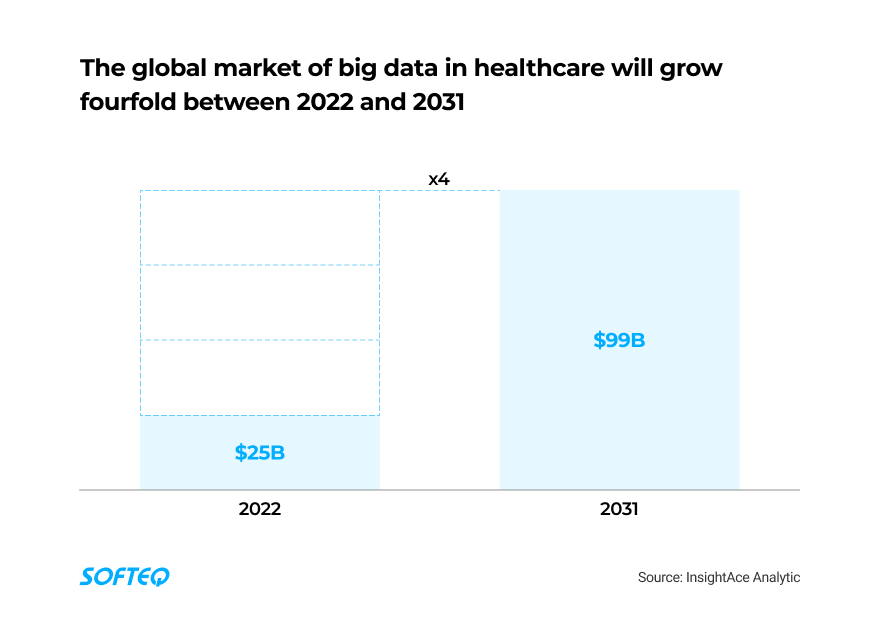
Depending on the complexity of your goal, there are various ways you could use big data to build healthcare solutions.
Basic scenario: data management. Solutions built around data management capabilities help healthcare providers manage and analyze patient records more efficiently. Big data comes in the form of electronic health records (EHRs) and electronic medical records (EMRs), which store a lot of patient data. With analytics tools, this information can be organized and used for various tasks, such as scheduling and tracking patient attendance. Clinicians can also track their patients’ conditions and if they take their drugs as prescribed.
Middle scenario: predictive analytics. In this scenario, tech companies focus on big data to identify patients at risk of diseases like diabetes or heart disease. They create tools that analyze patient data, including their genetics, lifestyle, and medical history. This data can be used to develop predictive models that help identify patients at high risk. As a result, doctors can suggest ways to prevent illnesses and customize treatment plans.
Advanced scenario: analyzing large datasets. Big data applications can be used for genomics and drug discovery. Tech companies create tools for researchers to analyze extensive genomic datasets. Such solutions can compare genomic data from large populations, helping to aid a better understanding of the genetic basis of diseases, among other things. They can also analyze drug responses and discover potential drug targets. Finally, doctors can tailor treatments based on patients’ genetic makeup.
To efficiently implement big data in the healthcare industry, data scientists, healthcare professionals, and technology experts need to work together. Let’s take a look at three promising big data applications in healthcare.
Use Case 1. Big Data to Personalize Medical Care
Treating life-threatening diseases using a one-size-fits-all approach has been proven ineffective. For more successful diagnoses and therapies, clinicians need to personalize medical care. That’s where precision (personalized) medicine comes in.
Fueled by big data, precision medicine makes it possible to tailor treatment to each individual patient depending on their characteristics. This enables clinicians to treat diseases more effectively and improve outcomes. There’s lots of opportunity for tech companies to create solutions that facilitate this personalization.
With big data solutions, clinicians can access data from gene sequencing, remote patient monitoring (RPM) devices, and clinical studies. For example, with the help of machine learning (ML), ribonucleic acid (RNA) data can be used to describe a patient’s genes. Doctors can use this information to group their patients and provide more personalized treatment instead of standard care.
With big data, it’s also possible to personalize medical care by identifying patients with a high risk of developing specific diseases. This can offer valuable insights into the biology of a disease and its risk factors. For example, specific molecular signatures are linked to different cancer types. One of them is the BRCA mutation, which increases the risk of breast and ovarian cancers. With AI, it’s possible to analyze genomic and molecular data and detect this mutation. Clinicians can keep an eye on women with the BRCA mutation and send them for mammograms or ovarian ultrasounds more frequently.
Real-Life Example
SOPHiA GENETICS is a biotech company that supports healthcare providers. They created a platform called SOPHiA DDM™. It analyzes data and generates insights from complex data sets like genomics and radiomics. Using the platform, the company analyzed over 1.3 million genomic profiles. This data helps clinicians select the best possible treatments for their patients.
The platform uses ML algorithms to call, annotate, and pre-classify variants from raw next-generation sequencing (NGS) data. Insights from this data help discover new biomarker signatures, providing a better understanding of diseases. The platform is used by hospitals, laboratories, and biopharma institutions. As a result, researchers can create drugs tailored to patients’ needs, and clinicians can offer more effective treatments.
Benefits
- Enhanced patient care
- Improved patient safety with less chance of misdiagnosis
- Better understanding of the nature of diseases
- Saved costs on inefficient treatments
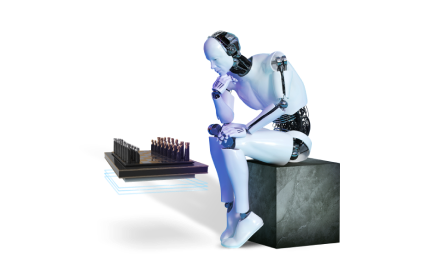
Use Case 2. Big Data to Make Informed Decisions
For decades, doctors relied on their medical expertise and knowledge of protocols to determine which treatment to prescribe to a patient. Unfortunately, the treatment they select might not always be the best approach—especially for diseases like cancer, which demand quick, potentially life-saving decisions. Early diagnosis is another factor that impacts a patient’s outcome. Now, doctors can make smarter decisions with the help of big data. Tech companies can create tools that harness big data, enabling clinicians to rely more on evidence-based medicine.
Individual data sets applied for big data algorithms can provide the most robust evidence, enabling clinicians to make more informed decisions. As a result, each patient can receive a custom treatment plan. Additionally, it helps prevent drugs from being prescribed that lead to adverse reactions. Doctors are also less likely to prescribe expensive but ineffective treatments.
Big data can also help improve drug adherence. It’s possible to analyze check-ups of patients in different demographic groups to reveal factors that discourage them from taking up treatment.
Real-Life Example
Pulselight is a healthcare analytics provider. They created a solution to help clinicians make smarter decisions when prescribing opioid drugs. Recently, misuse, addiction, and overdose deaths from opioids have significantly increased. The number of opioid overdose deaths has grown almost fivefold in the last decade, making it one of the most serious public health issues in the US right now.
The Pulselight solution analyzes large amounts of data to identify patients at high risk of overdose. It checks 1.5 billion records every day, looking at data from hospitals, pharmacies, and Medicaid, which insures people with low income. The platform inspects medical claims with the help of ML algorithms and over 100 different features. It connects information about how much medicine a person takes, how long they take opioids, and more. It also identifies problematic prescribers. Predictive analytics in the solution’s core helps identify individuals at high risk of overdose. As a result, it’s possible to introduce education or intervention programs.
Benefits
- Improving the quality of medical care
- Reducing the burden on healthcare systems
- Making better treatment decisions using data
- Identifying individuals at high risk
- Saving money by avoiding the consequences of health issues
Use Case 3. Big Data to Optimize Operational Efficiency
Healthcare organizations have to make lots of operational decisions to ensure the best possible quality of medical care. Some of these processes can be far from effective for many reasons. One of them is workforce shortages, which hospitals have been experiencing for several years. To continue providing care, they have to allocate their limited resources wisely. Another challenge for many providers is that they still have to manage their inventory manually. Thankfully, tech companies with big data solutions are now here to change this and improve operational efficiency.
With big data analytics, healthcare organizations can optimize their operations by analyzing data from various sources. With data collected from EHRs and RPM systems used to predict the expected number of patient visits and hospital admissions, healthcare facilities can optimize staff scheduling.
Data analytics can also help hospitals better manage their supplies. With all data in one place, solutions with predictive capabilities can help personnel forecast demand for medical supplies and equipment. This means they can ensure the correct items are available when and where they are needed, causing fewer disruptions to patient care.
Real-Life Example
Johnson & Johnson sells medications, vaccines, and medical devices globally. They created a data analytics platform that combines 35+ global data sources to make their supply chain more visible. The data used to come through separate systems to be analyzed by hand, but now, Johnson & Johnson can optimize their supply chain in several ways. They can keep shelves stocked at their retail partners, for example. They can also be sure vaccines are stored at the correct temperature and delivered on time.
To create a single view of the data, Johnson & Johnson engaged Databricks, the US software company. Their solution is called the Databricks Data Intelligence Platform and operates on the Azure cloud. It allowed Johnson & Johnson to bring all their global data together; the new common data layer replaced more than 35 data sources from fragmented systems.
The solution comes with predictive analytics capabilities. It allows Johnson & Johnson to predict key trends and understand their customers’ needs. In particular, they can forecast product demand from their retail partners and the right stock levels as a result. They can also track patient therapy products throughout the supply chain.
Johnson & Johnson reduced the cost of their data engineering workloads by half. They also reduced the data delivery lag from 24 hours to under 10 minutes.
Benefits
- Saving time and money by getting rid of manual operations
- Making operations and inventory more visible
- Managing resources faster and smarter
- Improving decision making
- Providing better customer service
Bottom Line
There are even more big data use cases in healthcare that prove its potential. With access to big data and software to process it, healthcare providers have a wealth of possibilities. For example, it’s now possible for them to predict and combat health crises, prevent at-risk patients from developing diseases, and create more effective treatment plans. Overall, healthcare organizations can improve their patients’ quality of life.
Applying big data in healthcare is an exciting prospective niche for tech companies. This area of technology is fertile ground for innovation. You can become a key player in the healthcare ecosystem, significantly impacting patient care and the industry as a whole. Whether you’re a healthcare provider or a company that needs a technical partner to expand in this niche, we’re here to help.
More articles on the topic

